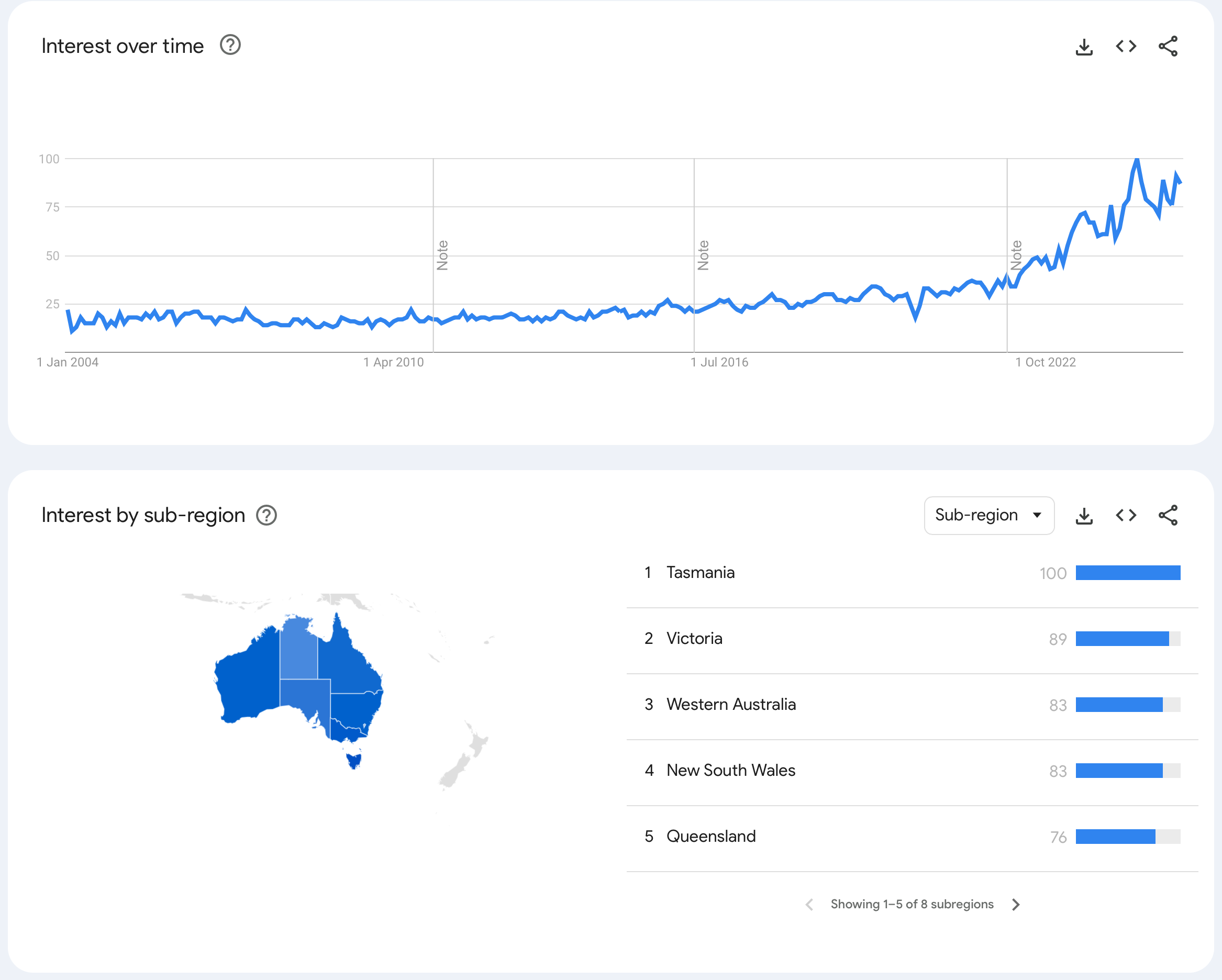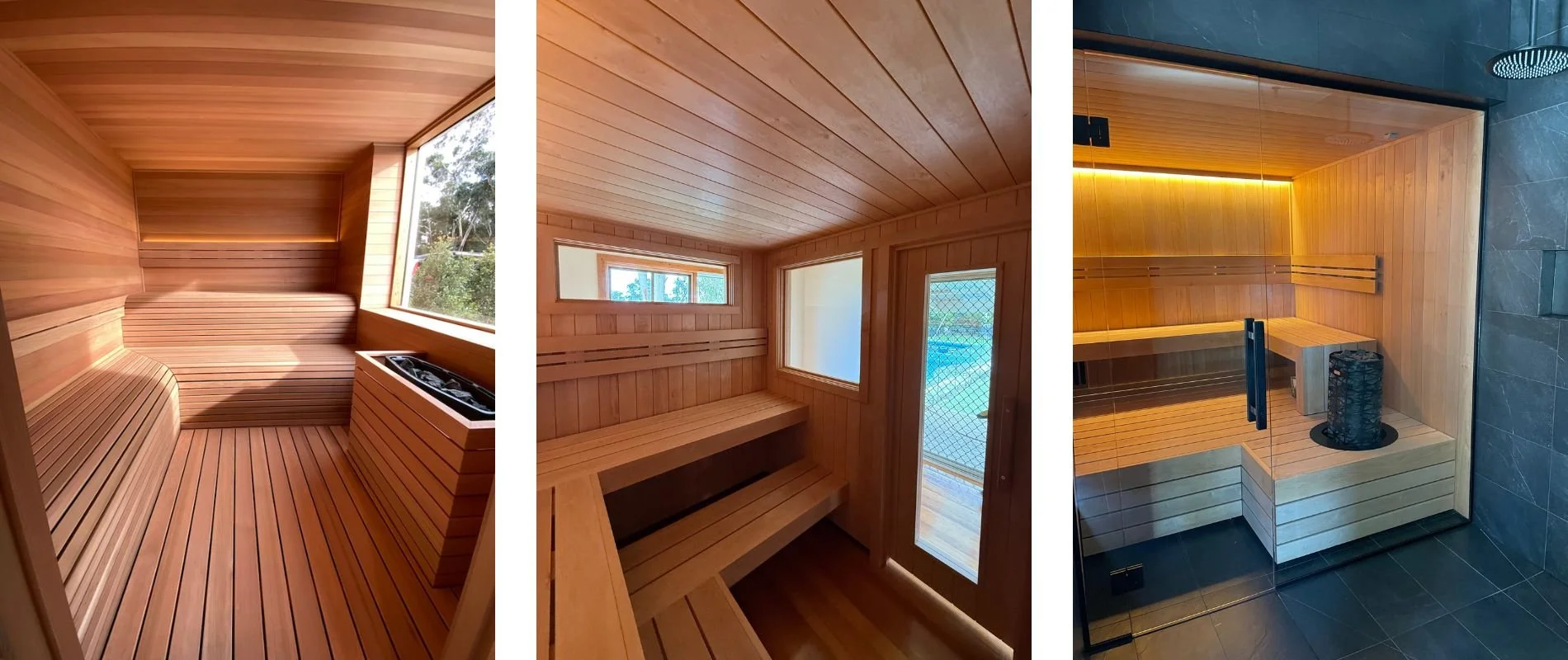From the Nordics to the Southern Hemisphere: How Finnish Sauna Culture is Heating Up in Australia
It’s early May, and one of Europe’s—and Australia’s—favourite times of year is approaching: Eurovision! If you’re new to Australia, it might surprise you to learn just how big the song contest is here. In 2024, national broadcaster SBS reported that over 2.2 million viewers tuned in, and since 2015, Australia has even competed as an official “wild card” country.
This year’s Eurovision marks a special moment for the Finnish-Australian connection. Finland is sending pop act Erika Vikman—but there’s a second surprise. Finnish comedy-folk trio KAJ will represent Sweden, and they’re bringing traditional saunas (and towel-clad Finns) to the global stage. Aussies are likely to love it. Much like Eurovision itself, sauna culture has found a growing fanbase here. Whether it’s a post-gym sweat, a backyard retreat or a wellness escape, saunas are fast becoming part of Australia’s health-conscious lifestyle—with a distinctly Nordic twist.
Curious to know whether this sauna buzz reflects a deeper trend, we at the Finland Australia Chamber of Commerce (FACC) spoke with local sauna builders in NSW and Victoria, global suppliers, and everyday sauna users to explore what’s behind the boom—and how Finnish know-how is helping shape it.
Global growth with nordic roots: Harvia and the data behind the boom
The rise of sauna culture in Australia isn’t just a local curiosity—it’s part of a broader global wave, anchored by Finnish leadership and amplified by shifting wellness priorities. Harvia, the world’s largest sauna and spa brand, is at the forefront of this transformation.
In 2024, Harvia reported a 51.8% year-on-year revenue increase in the APAC and MEA region, which includes Australia. Their footprint in the region grew to EUR 16.7 million in revenue and 56 employees, cementing their role in what they describe as “strategically important regional markets.”
“Strengthening our portfolio and digital capabilities has a key role in building more innovative and sustainable offering and securing our future success.” — Harvia 2024 Annual Report
Their acquisition of steam brand ThermaSol and ongoing investment in connected, sustainable technologies show that sauna culture is no longer a Nordic niche—it’s a global wellness movement.
On the ground: what Harvia sees in Australia
In Australia, the shift is especially visible to Anthony Lombardi, Harvia’s local Product Manager. He notes:
“The volume of Harvia products sold in Australia has increased exponentially.”
“New sauna retailers are popping up regularly—many of them exclusively using Harvia equipment.”
His personal experience reflects the scale of this momentum:
“My mobile used to ring once or twice a day. Now it can ring all day.”
“Each month I learn of a new sauna shop in Australia selling our products.”
While Harvia can’t share specific sales figures due to its publicly listed status, this on-the-ground activity paints a vivid picture of a market in motion.
Google doesn’t lie: sauna searches are surging
Australian consumers are also taking their interest online. According to Google Trends, search volume for “sauna” in Australia has climbed steadily over the past two decades, with particularly strong interest across Australia’s southern states, with a dramatic spike starting around 2020. That surge happens to align with COVID-era lockdowns, when public wellness services were paused and private, in-home health solutions gained traction.
Source: Google Trend
The data suggest that once seen as a rare luxury or wellness centre activity, the sauna is now becoming a mainstream health and lifestyle choice for people in their homes—driven by both adopted tradition and innovation.
A sauna boom, the Finnish way
While global suppliers like Harvia are fuelling the surge in sauna availability, the heart of Australia’s sauna boom lies in local craftsmanship and the builders bringing them to life—often led by Finnish-born or Finnish-trained builders who are translating Nordic principles into distinctly Australian settings.
Elite Sauna Pty Ltd (NSW): A personal journey from Finland to full-time sauna building
For Antti Räsänen, the founder of Elite Sauna and now based in New South Wales, building saunas isn’t just a trade—it’s a cultural calling. Trained as a carpenter in Finland, he participated in more than 40 sauna builds before relocating to Australia in 2015. What started as general carpentry soon turned into a rare opportunity: building Finnish-style saunas full time.
Antti is also a member of the Finland Australia Chamber of Commerce (FACC), and his projects now span everything from backyard sanctuaries to hotel wellness areas and even trailer-mounted mobile saunas.
“Electric saunas are by far the most popular,” he says, “but health and lifestyle are the biggest driving factors.” And while many of his clients are vaguely familiar with sauna culture, Antti often plays a guiding role—helping them understand the difference between a warm wooden room and an authentic Finnish experience.
One emerging trend he’s noticed? A shift from passive relaxation to performance optimisation. “People are timing their sessions around workouts, humidity levels, temperature—it's sauna as part of a training schedule,” he explains. This health-first mentality is a growing theme among Australians who are redefining sauna use for modern lifestyles.
Recent Elite Sauna projects
Sauna HQ (Victoria): four decades of Finnish sauna building technique on Australian soil
Few businesses in the country can match the longevity—or authenticity—of Sauna HQ. Founded as Finnleo Saunas Australia in the late 1980s, the business is now led by Marko Tossavainen, the son of the original founder and Managing Director of Sauna HQ. Operating primarily in Victoria, the company continues to build saunas using the same fundamental techniques passed down from Finland.
“We build our saunas basically exactly the same way they are built in Finland,” says Marko. “Although some materials and lighting options change over the years, the core techniques are the same ones used to build thousands of saunas across Finland.”
Sauna HQ has completed more than 3,500 builds across Australia, from small residential installs to large commercial projects—including 27 saunas for the Sydney 2000 Olympic Games. Residential builds now make up around 65% of Sauna HQ’s projects. “They’re often smaller than the commercial ones, but it shows how sauna culture is moving into people’s daily lives,” Marko says.
He also points to the post-pandemic pivot as a major catalyst. “COVID really pushed people towards home saunas,” he told us. “Many customers missed using the sauna at their gym or local aquatic centre, and with venues closed, they started looking into having one at home.” Tossavainen also highlighted the influence of podcasts and wellness figures—naming Joe Rogan as an unexpected driver of sauna interest globally.
But building high-quality saunas in Australia comes with challenges. Both Antti and Marko cite the same hurdle: competition from low-cost, prefabricated flat-pack models, many of which are imported and built to looser standards. “Some people are surprised Finnish saunas are still a ‘thing,’” Marko notes. The result? A growing need for education—not just on quality and materials, but on the cultural heritage behind the heat.
Recent sauna builds by SaunaHQ
Sophie’s and Juha’s sauna: where the day ends and the calm begins
When Sophie Fleiter and Juha Järä moved into their first home together in Beaumaris, they knew exactly what they wanted in their backyard: an authentic sauna. Not just any sauna—but one that would get properly hot, feel durable, look beautiful, and reflect something deeper than just a wellness trend.
“It’s something we both love to do and share,” Sophie says. “And we really wanted to bring a bit of Finland into our life here in Melbourne.”
That idea had been simmering since Sophie’s first visit to Finland. What surprised her most wasn’t the number of saunas—it was how normal they were.
“I’d only ever seen saunas in gyms or wellness centres,” she explains. “It never occurred to me that you could have one in a regular home. In Finland, they’re just part of life. That made it feel possible.”
Back home, the couple committed to making that vision real. They worked with a local builder to install a traditional sauna in their garden—a design that was equal parts practical and personal.
A wellness ritual that works
Though the sauna is still new, it’s already part of their routine—used four to five times a week, often after work.
For Sophie, who lives with inflammatory arthritis, it’s become both therapy and sanctuary.
“Heat is one of the most effective ways I’ve found to relieve joint and muscle pain,” she says. “But it’s also how I de-stress. It clears my head. I sleep better. I feel better.”
Sometimes it’s a shared experience, other times it’s solo. Either way, it’s intentional.
“It gives us that quiet moment at the end of the day,” Juha adds. “It’s simple, but meaningful.”
Not just a sauna, but something that belongs
This wasn’t about luxury. It was about creating something that belonged to them—something rooted in their daily life, not just aesthetics.
“We didn’t want a flashy spa feature,” Sophie says. “We wanted something real, something authentic. Something we’d use often together—and love.”
Their story reflects what more Australians are discovering: saunas aren’t just for retreats or the ultra-health-conscious. They’re becoming part of the home—part of life.
Sophie’s ja Juha’s Beaumaris sauna was built and installed by Sisu Sauna.
How Finnish sauna culture is taking root in Australia
Sauna culture in Australia is no longer emerging—it’s arrived. Once reserved for hotels, gyms or the occasional spa, the sauna is now being installed in backyards, apartments, and new builds across the country. What was once considered a Northern European ritual has, on the other side of the world, been reimagined as something practical, personal, and completely at home.
The shift is driven by changing attitudes to wellness, pandemic-era lifestyle adaptations, and the quiet influence of media and makers alike. But it’s also something deeper: a growing number of Australians are choosing to adopt the essence of sauna tradition—the heat, the stillness, the rhythm—while shaping it into something of their own.
And the impact reaches beyond health and habit. Finnish products—heaters, timbers, lighting—are flowing steadily into Australia. Local builders are in demand. Sauna shops are opening. It’s not just a cultural shift, but an economic one: jobs created, partnerships formed, industries growing.
That’s why events like the Eurovision Viewing Party at Denmark House in Melbourne on May 18 feel especially timely. While fans gather to cheer on their favourite country—and perhaps spot a towel-clad Finn or two on stage—they’re also celebrating something bigger: how cultural traditions can travel, adapt, and find new life far from where they began.
This isn’t nostalgia. It’s a movement.
Sauna culture has crossed hemispheres—and found a new home.




